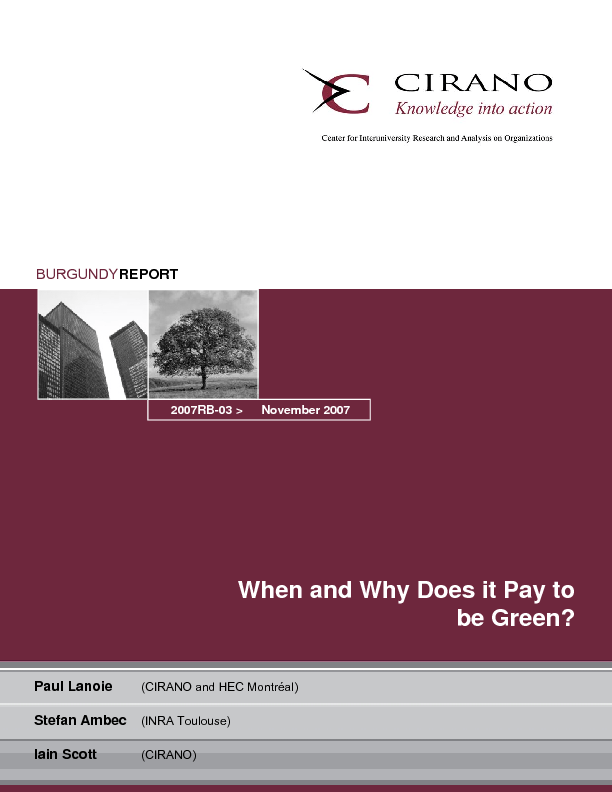When and Why Does it Pay to be Green?
According to widely held beliefs, environmental protection is associated with an increase in costs for businesses imposed by the government. Over the last decade, this view has been challenged by a number of analysts. They have identified many possibilities, from a conceptual or theoretical point of view, whereby firms could offset the costs of sustaining the environment with higher profits.
First, a better environmental performance can lead to an increase in revenues through the following channels: i) a better access to certain markets; ii) the possibility to differentiate products, and iii) the possibility to sell pollution-control technology. Second, a better environmental performance can lead to cost reductions in the following categories: iv) regulatory costs; v) cost of material, energy and services; vi) cost of capital, and vii) cost of labour.
The purpose of this report is to provide empirical evidence supporting the existence of these opportunities and to assess their magnitude. For each of the seven possibilities identified above, we provide a discussion of the mechanisms involved and a systematic view of the empirical evidence available. The objective of this paper is not to show that a reduction of pollution is always accompanied by a better financial performance, it is rather to argue that the expenses incurred to reduce pollution can sometimes be partly or completely compensated by gains made elsewhere. Through a systematic examination of all the possibilities, we want to identify the circumstances most likely to lead to a winwin situation, i.e., better environmental and financial performance.
[ - ]
First, a better environmental performance can lead to an increase in revenues through the following channels: i) a better access to certain markets; ii) the possibility to differentiate products, and iii) the possibility to sell pollution-control technology. Second, a better environmental performance can lead to cost reductions in the following categories: iv) regulatory costs; v) cost of material, energy and services; vi) cost of capital, and vii) cost of labour.
The purpose of this report is to provide empirical evidence supporting the existence of these opportunities and to assess their magnitude. For each of the seven possibilities identified above, we provide a discussion of the mechanisms involved and a systematic view of the empirical evidence available. The objective of this paper is not to show that a reduction of pollution is always accompanied by a better financial performance, it is rather to argue that the expenses incurred to reduce pollution can sometimes be partly or completely compensated by gains made elsewhere. Through a systematic examination of all the possibilities, we want to identify the circumstances most likely to lead to a winwin situation, i.e., better environmental and financial performance.




